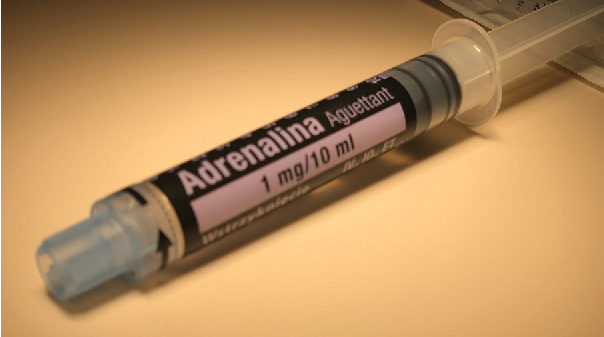Conclusion: While the use of adrenaline in adults with OHCA results in a significant increase 30-day survival, it does not increase survival with favourable neurological outcome and produces more survivors with severe neurologic impairment
- PARAMEDIC2 was a double-blinded placebo-controlled RCT conducted by 5 ambulance services in the UK
- Providers used uniquely numbered, identical pre-prepared packs containing 10 syringes with either 1mg epinephrine or 0.9% saline, and patients were allocated in a 1:1 ratio
- Inclusion criteria were patients >16 yrs old with OHCA
- Patients were excluded if pregnant (known or apparent), cause of arrest was asthma or anaphylaxis, or they had received epinephrine prior to arrival of trial trained paramedics
- One ambulance service excluded patients with traumatic cardiac arrest
- 10,623 patients were screened, of which 8014 were randomised (4015 to the adrenaline group and 3999 to the control group) – pre-trial target was 8000
- 2520 were then excluded. This included:
- 615 had a return of spontaneous return of circulation
- 1192 had already received adrenaline
- 228 excluded for traumatic cardiac arrest
- 2520 were then excluded. This included:
- Primary outcome: survival at 30 days
- Secondary outcomes included:
- Survival rates at various time points
- Hospital and ICU LOS
- Survival with favourable neurology at discharge and 3 months (mRS <= 3)
- Secondary outcomes included:
- Groups were well matched at baseline
- Age: 69.7 (adrenaline) vs. 69.8 (placebo)
- Male: 65.0% vs. 64.6%
- Initial shockable rhythm: 19.2% vs. 18.7%
- Initial non-shockable rhythm: 78.4% vs. 79.5%
- Medical cause of arrest: 91.1% vs. 92.3%
- Unwitnessed: 37.3% vs. 37.6%
- Bystander: 50.1% vs. 49.2%
- Time frames for key events also similar
- Median interval between emergency call and ambulance arrival
- 6.7 min (Epinephrine) vs. 6.6 min (Placebo)
- Median interval between emergency call and administration of trial agent
- 21.5 min vs. 21.1 min
- Median interval between emergency call and ambulance arrival
- Results: Survival at 30 days was significantly improved in the adrenaline group (3.2% vs 2.4%, OR 1.47 – CI to 1.09 – 1.97); NNT = 112
- No significant difference in survival with favourable neurology 3 months (2.1% vs. 1.6% (OR 1.3 – CI 0.97 – 2.01)
- Survival with severe neurologic impairment was significantly higher in the adrenaline group compared to the placebo group (31% vs 17%)
- Strengths:
- This is the largest study on this subject to date providing the largest data set, challenging a therapy entrenched within cardiac arrest management guidelines
- Pragmatic design with rigorous methodology
- Primary outcome was patient centred
- Limitations:
- Although statistically significant, the fragility index with respect to 30 day mortality is only 6
- There was significant loss to follow-up for the secondary outcomes – 20 (18.2%) in the placebo group and 29 (18.2%) in the epinephrine group were lost at 3 months, which weakens the conclusions that can be drawn from these outcomes
- Not generalisable to the in-hospital setting where CPR and drugs can be rapidly given after onset of cardiac arrest
Reference: Perkins GD, Ji C, Deakin CD, et al. A Randomized Trial of Epinephrine in Out-of-Hospital Cardiac Arrest. N Engl J Med. 2018 Aug 23;379(8):711-721.
Full text: https://www.nejm.org/doi/pdf/10.1056/NEJMoa1806842



